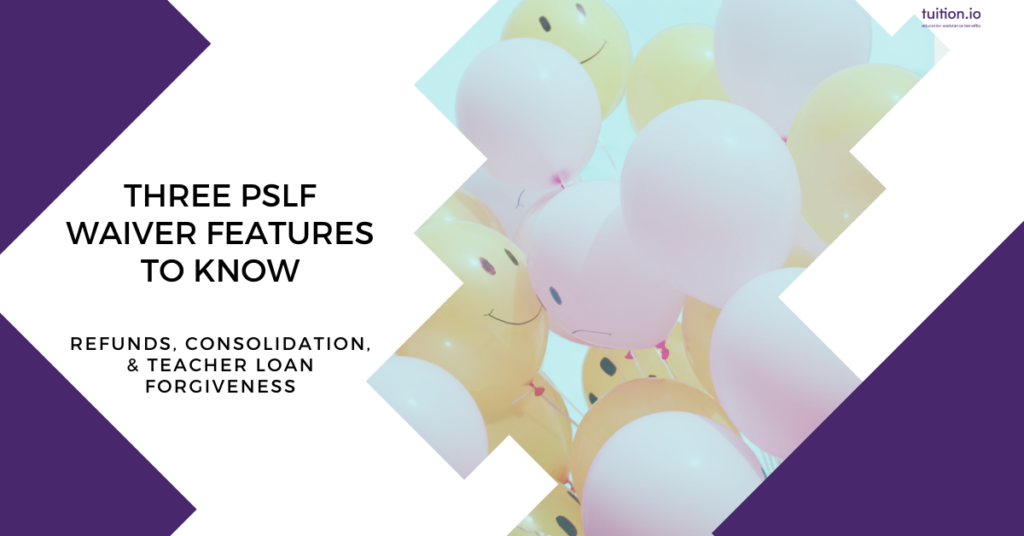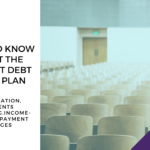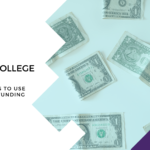The PSLF limited waiver opportunity gives borrowers a second chance at Public Service Loan Forgiveness (PSLF). However there might be some nuances to the waiver that can help you get forgiveness. Read on for more information about how the PSLF limited waiver impacts consolidation, overpayment refunds, and teacher loan forgiveness.
What is the PSLF limited waiver?
On Oct. 6, 2021, the U.S. Department of Education (ED) announced a change to Public Service Loan Forgiveness (PSLF) program rules for a limited time. Through 10/31/2022 borrowers may receive credit for past payments made that would not otherwise qualify for PSLF. That means if you’ve previously been denied PSLF, you may be eligible under the temporary waiver.
The key thing to remember is that if you made payments on your federal student loans while employed full-time for a qualifying employer since October 1, 2007, you can have payments toward PSLF counted. To learn more about the limited waiver be sure to read What You Need to Know About the PSLF Limited Waiver Opportunity.
Consolidating loans with different payment count before 10/31/2022 gives you the largest number of qualifying payments.
You read that right. A new Q&A released by the Dept of Ed states:
How many payments can I get if I consolidate loans with different numbers of qualifying payments?
Assuming that your repayment history overlaps for each loan, the consolidation loan will be credited with the largest number of payments of the loans that were consolidated. For example, if you had 50 qualifying payments on one Subsidized Stafford Loan and 100 qualifying payments on another Subsidized Stafford Loan and you consolidate those loans, you will receive 100 qualifying payments on the new Direct Consolidation Loan.
If your repayment history does not overlap for each loan, the consolidation loan may be credited with more than the loan with the largest number of payments.
So what does this mean for you? Borrowers with different qualifying payment counts, for example those who took a break between undergraduate and graduate degrees, should consolidate. Consolidating will give you the highest qualifying payment count.
What about Parent PLUS loans?
Unfortunately payments made on parent PLUS loans can’t be counted under the PSLF limited waiver. When consolidating these loans their payments will start at zero. However, in order to make any progress toward PSLF Parent PLUS loans must be consolidated to a Direct Consolidation Loan. So don’t wait to consolidate.
You can get a refund if the PSLF wavier gives you more than 120 qualifying payments on Direct Loans.
Under the PSLF limited waiver, you can get a tax free refund for any payments counted under the waiver that exceed 120. Unfortunately this only applies to payments made on Direct Loans. If you’ve only had FFEL or Perkins loans, you can still consolidate and get your remaining balance forgiven tax free. But you won’t be able to get a refund for any payments made over the 120 required.
You can’t get a refund of prior payments if you’ve already gotten forgiveness or repaid your loans.
If you’re a teacher and have already received teacher loan forgiveness, you can count that same employment period toward PSLF under the waiver.
Before the PSLF limited waiver, if you already received Teacher Loan Forgiveness, the period of service that led to your eligibility couldn’t also count toward PSLF. However as long as you certify your employment before 10/31/2022 by submitting a PSLF form, the period of service that led to your eligibility will count toward PSLF. Like all benefits under the PSLF limited waiver, this is temporary so don’t wait to submit your PSLF form.
Key Resources
What You Need to Know About the PSLF Limited Waiver Opportunity
Federal Student Aid PSLF Waiver Announcement and Q&A
Department of Education Direct Consolidation Loan Application




